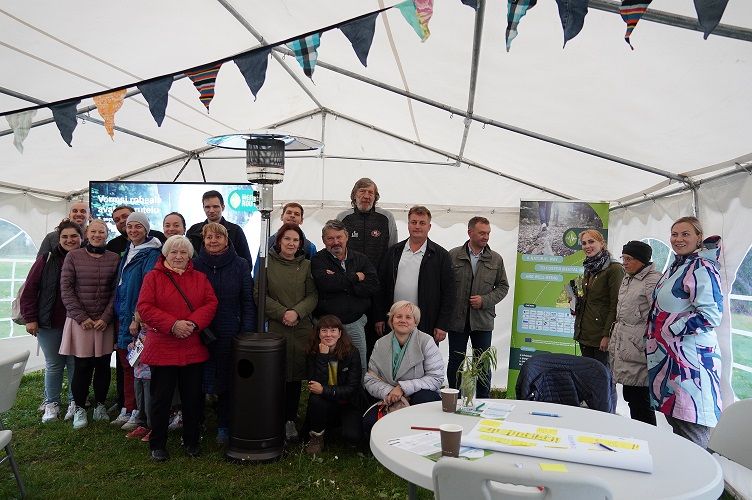Latest News
14 February 2022
Enhancing natural and cultural values in Tallinn's Vormsi Park
In GoGreenRoutes, the City of Tallinn (Estonia) is working to enhance the recognition of existing natural and cultural values through site-specific green solutions. The city will implement a series of interventions (Nature-based Solutions) at the Vormsi Park to make it more accessible and pleasant so that all residents can spend their free time there. This will help increase environmental awareness, establish an educational learning environment for children, and promote healthy lifestyles.
In addition, it is important to foster collective action and a sense of community. To achieve this, Tallinn is designing green spaces in cooperation with local residents, educational institutions and other organisations in the Lasnamäe district. Besides the locals, it is involving various specialists in the environmental and human well-being fields so that the final interventions are well-thought-out and meet local needs.
What area does the project focus on?
The pilot area of GoGreenRoutes in Tallinn is the Vormsi park located in Lasnamäe, the largest residential district in Tallinn. The Nehatu Primary School was established there in the 1930s, but only its foundation remains until today. The school area itself used to have beehives and a fruit tree garden, from which an abundance of apple, cherry, plum and creek trees still grows. The landscape and the fruit tree garden that was formed at that time serve as the main reference points for the GoGreenRoutes team and further developments of the area. At the moment, it can be described as urban wilderness that has been unfortunately neglected and unmaintained. However, it remains a valuable natural space that is used by locals for leisure.
Next to the green space at the former school, there is a playground with different possibilities for active recreation for children and families. The area is located near residential apartment buildings and various educational institutions which provide opportunities to engage different target groups.
What has the project team accomplished so far?
The city's first public open discussion with local stakeholders took place as a workshop on the 8th of September 2021, followed by an analysis of the results and a discussion with experts on the 29th of September. The aim of the meetings was to establish key values, challenges and possible solutions for the Vormsi green area and find the best approaches for developing the green area according to both the residents’ expectations and the city’s possibilities. Local residents and organisations, city district officials and other specialists from various administrative departments attended the workshop.
Many ideas were mentioned, but the following stood out the most:
- establishing trails with varied thematic routes
- maintaining and displaying the school’s ruins and the fruit tree garden
- planting fruit trees by the local schools and kindergartens, and observing their growth (as part of outdoor study programmes)
- creating leisure areas for older generations
- organising cultural programmes and activities for all age groups that promote active lifestyles
What are the next steps?
Based on the feedback received from the experts, the city plans to conduct preliminary studies of the area to get a better overview of the existing vegetation, soil and landscape.
As a result of the first discussions, the city has received many great proposals from its network’s partners on how to diversify the Vormsi green area and which activities it can organise. It will continue to work together and involve them in planning and carrying out the primary spatial interventions (Seedbed Interventions), that will take place during 2022. Different possibilities would be to organise an environmental urban quest in cooperation with local youth centres and schools; build a terrace on the school’s foundation by engaging design experts; open a pop-up café with the help of the local schools' student council; and maintain existing fruit trees and plant additional berry bushes with the support of residents. To find the best final solutions, the city will continue to organise meetings and discussions with various stakeholders.
Image by "City of Tallinn"


